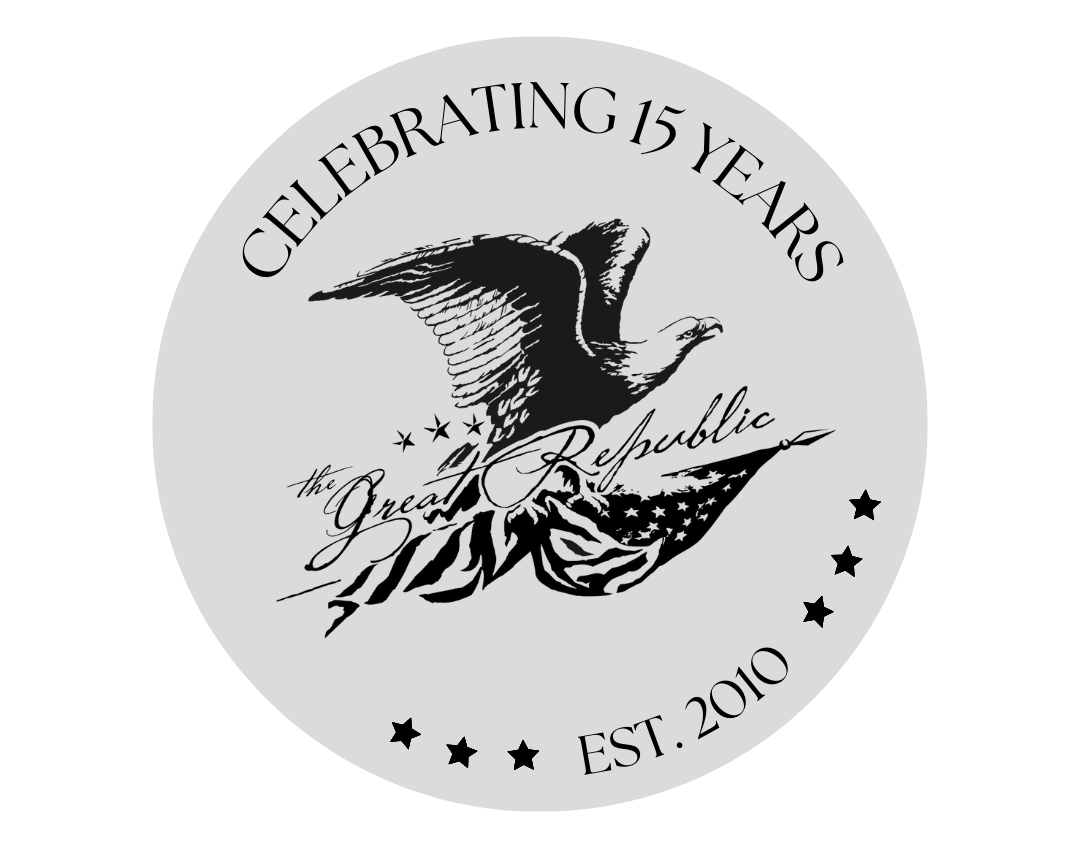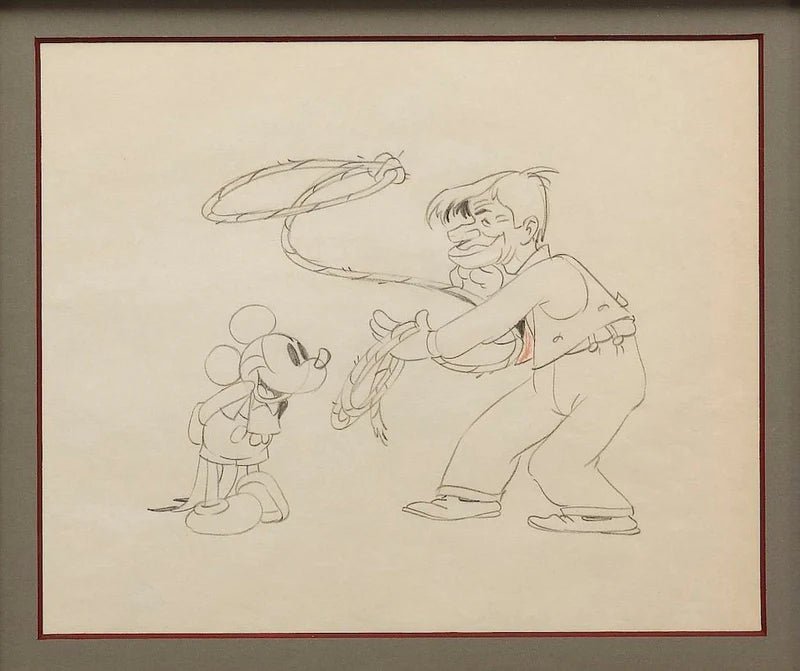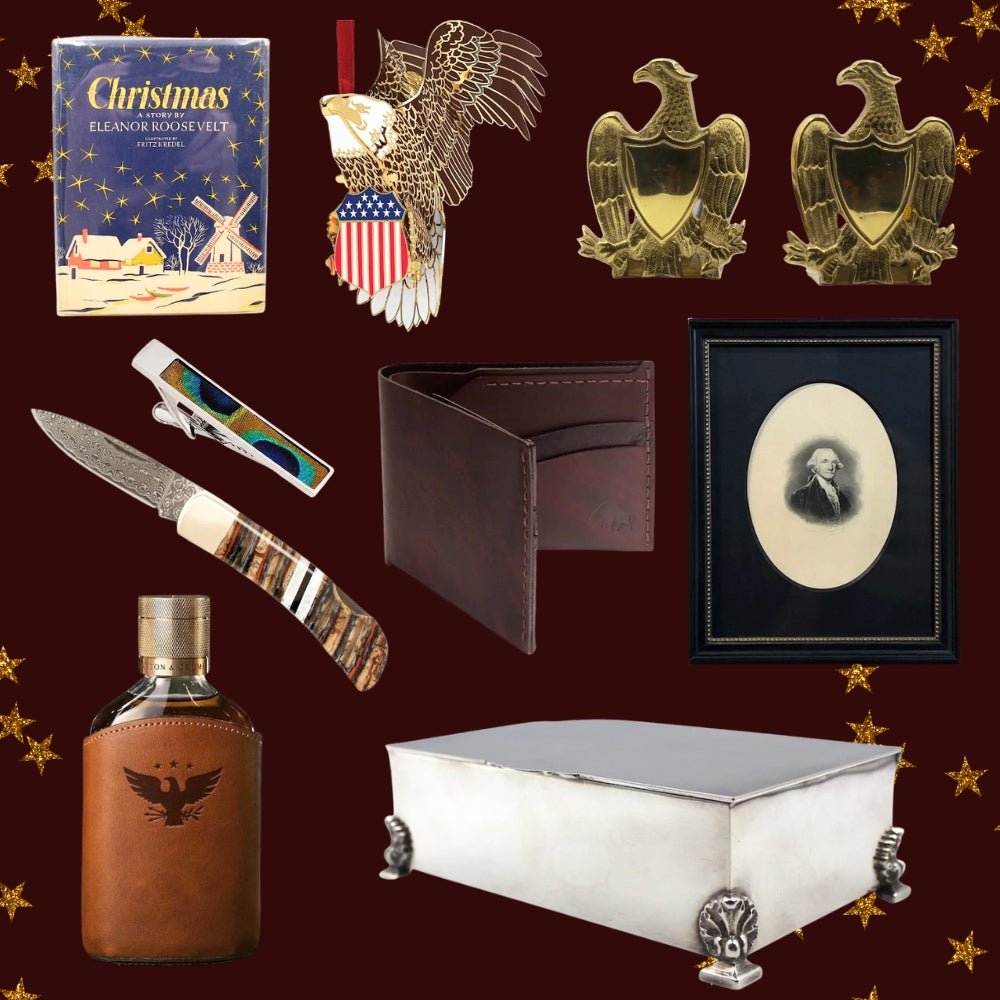The History of the Baldric Sash
One of my favorite items hanging in the Colorado Springs shop is our Patriotic Baldric Sash that dates to the late 19th century. This sash features 13 shining silver sequin stars affixed to a bright blue canton, with red and white stripes completing the design. The ends are brought together at the bottom by a round banner button and the sash edges are lined in silver. A marking on the interior indicates the sash’s Pennsylvania manufacturer: "Louis E. Stilz & Brothers, Philadelphia."
Patriotic baldric sashes were frequently produced in the late 19th through early 20th centuries. Political candidates, as well as elected officials, often sported the hand-made sashes during campaign events, parades, or significant patriotic celebrations.
While such political baldric sashes were common at the turn of the century, the use of a baldric sash dates back as early as ancient Roman times, to the “balteus.” Worn over the shoulder and across the chest, baldrics were used primarily to carry long swords on the body. A practical baldric was made of leather, but those owned by wealthier men were decorated with stones, brass, or featured gold trimming. The use of baldrics continued well into the 18th century, when swords were still commonplace.
Men also wore decorative baldrics to indicate their military unit, rank, or allegiance. This tradition can be seen clearly in General George Washington’s personal use of a blue moire silk sash during the Revolutionary War, and his system of color-coded ribbons to designate officers in his army. In his July 14, 1775 General Orders, Washington announced that “to prevent mistakes: The General Officers and their Aids-de-Camp, will be distinguished in the following manner: The Commander in Chief by a light blue Ribband, wore across his breast, between his Coat and Waistcoat. The Majors and Brigadiers General, by a Pink Ribband wore in the like manner. The Aids-de-Camp by a green ribband.” Washington’s “light blue ribband” is famously depicted in Charles Wilson Peale’s 1779 oil-on-canvas painting of Washington at the Battle of Princeton.
While political candidates of the late 19th and early 20th century did not have a similar military use for the baldric sash, they often sported the sash as a special tribute to its storied and military past and as a way to indicate their allegiance and patriotism. A beautifully-crafted artifact of our early political history, our Political Baldric Sash shines mounted in a custom black shadowbox frame.







